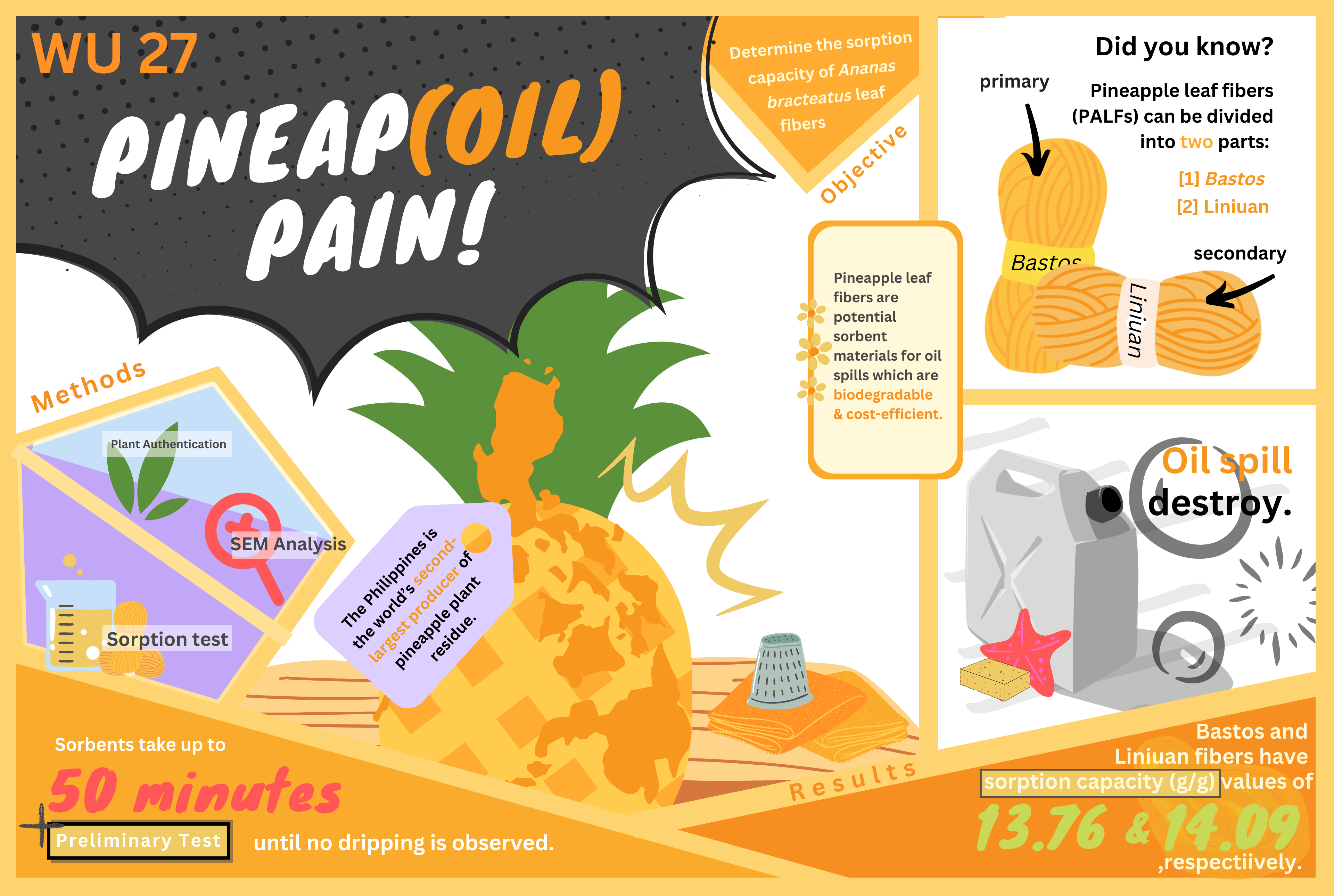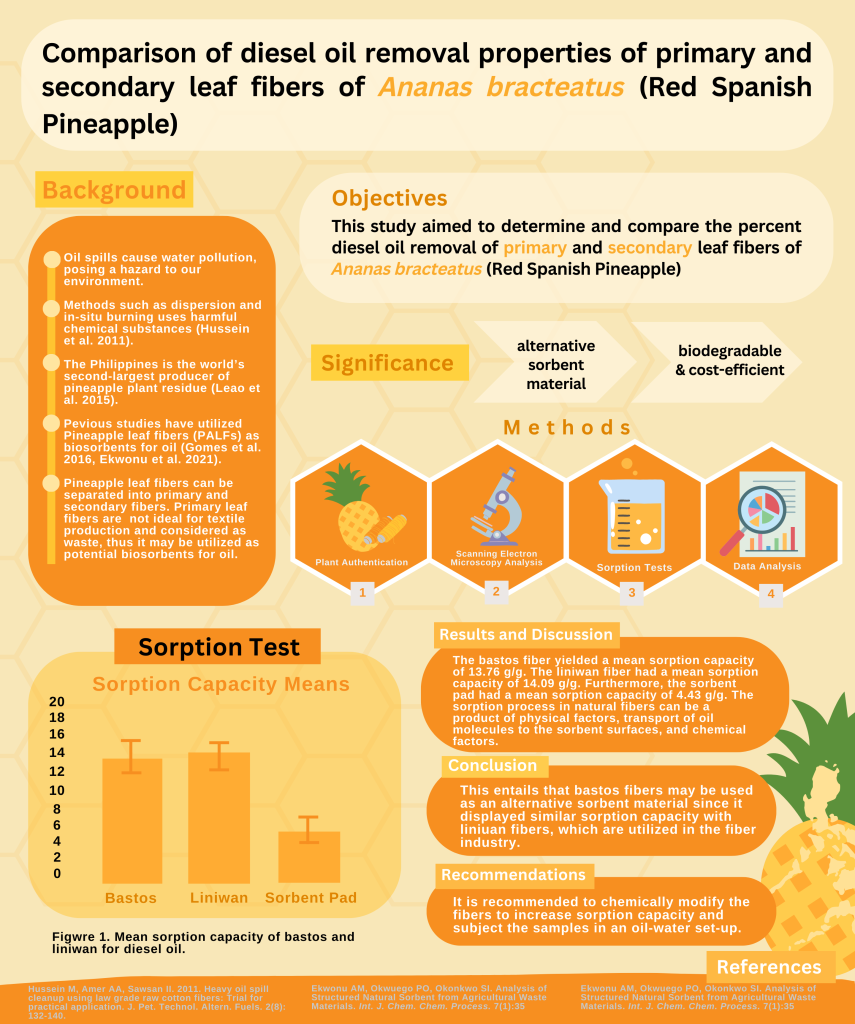Comparison of diesel oil removal properties of primary and secondary leaf fibers of Ananas bracteatus
RENIAH GRACE V. LAGUTANG, REIN MARGARETTE D. SARMIENTO, REN MARC T. TOBIAS, and FRITZ Z. ORTIGAS
Philippine Science High School Western Visayas Campus – Department of Science and Technology (DOST-PSHS WVC), Brgy. Bito-on, Jaro, Iloilo City 5000, Philippines
Abstract
The increasing dependence of humans on oil-based energy constitutes the risk of oil spills which pose hazards to the environment. Some existing oil spill cleanup methods apply chemicals that are harmful to marine life. Pineapple leaf fibers (PALFs) have been used as a sorbent and they showed excellent oil sorption, but are yet to be separated into primary and secondary leaf fiber. Bastos are coarse while liniwan are fine fibers which affect their oil sorption capacity since they have varying fiber diameters and surface area. In this study, primary (bastos) and secondary (liniwan) PALFs were used as sorbents and subjected to diesel oil. The mean sorption capacity by bastos, liniwan, and sorbent pad were 13.76 g/g, 14.09 g/g, and 4.43 g/g, respectively. Bastos and liniwan were found to have no significant difference between their mean oil sorption capacity and exhibited a significantly higher mean oil sorption capacity than the sorbent pads. This implies that both the bastos and liniwan can be used as sorbents for potential diesel oil spills. It is suggested to use bastos more as an alternative in diesel oil removal since it is not used in other industries as compared to liniwan.
Keywords: oil spill, Ananas bracteatus, sorbent, pineapple leaf fibers, fiber diameter


